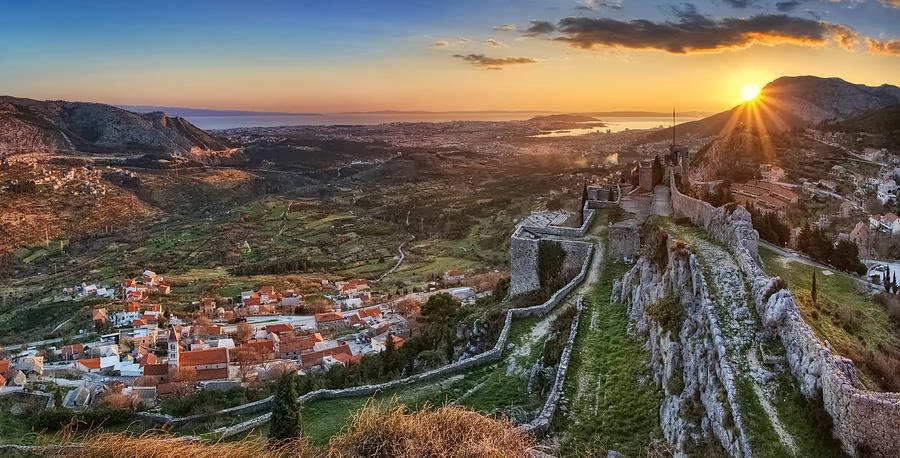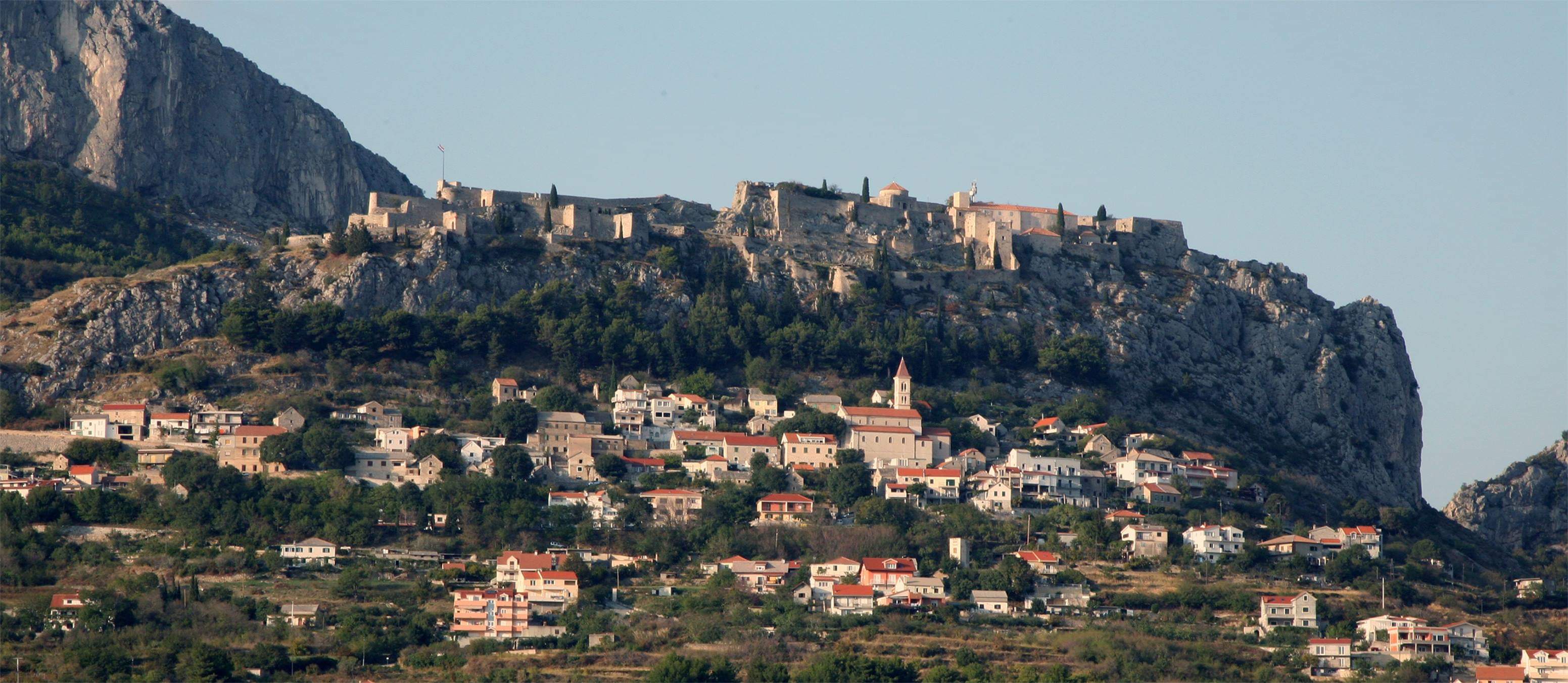 Historical development of Klis was primarily conditioned by its geographic position, which was one of essential determinants of life that once was in the southern parts of Croatia. Klis Fortress was built on an inaccessible steep cliff at the passage between mountain massifs Kozjak and Mosor. Fortress has had a prominent defensive position in the past since it has supervised and defended the most important trade and communication path from the hinterland to central Dalmatian coast. Given its strategic importance and its role in Croatian history, it was one of the most important forts in the country.
Historical development of Klis was primarily conditioned by its geographic position, which was one of essential determinants of life that once was in the southern parts of Croatia. Klis Fortress was built on an inaccessible steep cliff at the passage between mountain massifs Kozjak and Mosor. Fortress has had a prominent defensive position in the past since it has supervised and defended the most important trade and communication path from the hinterland to central Dalmatian coast. Given its strategic importance and its role in Croatian history, it was one of the most important forts in the country.
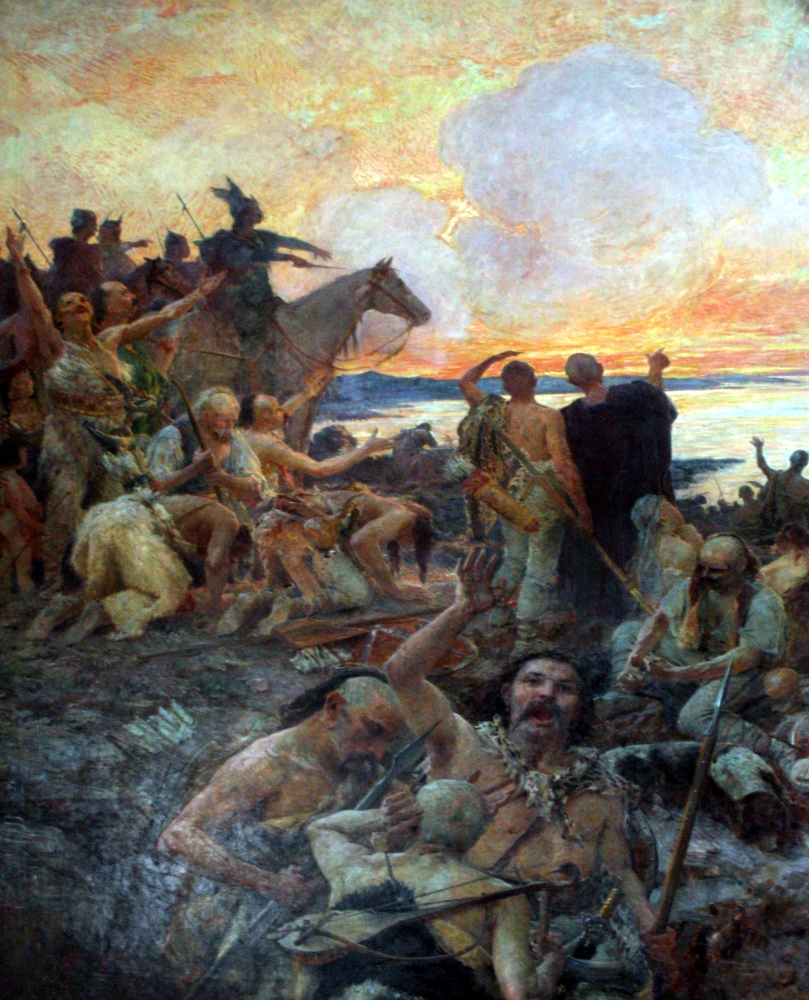 Since the 2nd century BC, Illyrian tribe called Delmata has resided in this area, and the cliff on which Klis Fortress rises was already inhabited back then. Following the arrival of Croats, the country is called by their name, while historical sources indicate that Croatia consisted of White Croatia and Red Croatia at that time. White Croatia extended from the river Raša to the river Neretva, and Red Croatia from the Neretva to the river Bojana. Twelve Croatian tribes lived in the area of White Croatia, and thirteen on the territory of Red Croatia, so it is significant that Croatian coat of arms has twenty-five squares (12 white and 13 red). During time, out of these two Croatian territories, including Byzantium Dalmatia, Dalmatian Croatia will be established. After King Tomislav victories over Hungary and Bulgaria, he united Dalmatian Croatia and Pannonian Croatia in an unique kingdom of Croatia. Croatian lords and kings administratively divided the country in "županije" (eng. counties). Županija is a name for administrative unit governed by "župan (iupanus)" (eng. similar to mayor), and that title has remained in Croatia for centuries. In the past, there were twelve counties in the area of White Croatia: Nin, Lika, Podgorica, Sidraga, Bribir, Knin, Cetina, Drid, Zminj, Imotski, Mokron and Klis County. In the 10th century, Constantine Porphyrogennetos stated Klis as the seat of Croatian county Parathalassie (Klis County).
Since the 2nd century BC, Illyrian tribe called Delmata has resided in this area, and the cliff on which Klis Fortress rises was already inhabited back then. Following the arrival of Croats, the country is called by their name, while historical sources indicate that Croatia consisted of White Croatia and Red Croatia at that time. White Croatia extended from the river Raša to the river Neretva, and Red Croatia from the Neretva to the river Bojana. Twelve Croatian tribes lived in the area of White Croatia, and thirteen on the territory of Red Croatia, so it is significant that Croatian coat of arms has twenty-five squares (12 white and 13 red). During time, out of these two Croatian territories, including Byzantium Dalmatia, Dalmatian Croatia will be established. After King Tomislav victories over Hungary and Bulgaria, he united Dalmatian Croatia and Pannonian Croatia in an unique kingdom of Croatia. Croatian lords and kings administratively divided the country in "županije" (eng. counties). Županija is a name for administrative unit governed by "župan (iupanus)" (eng. similar to mayor), and that title has remained in Croatia for centuries. In the past, there were twelve counties in the area of White Croatia: Nin, Lika, Podgorica, Sidraga, Bribir, Knin, Cetina, Drid, Zminj, Imotski, Mokron and Klis County. In the 10th century, Constantine Porphyrogennetos stated Klis as the seat of Croatian county Parathalassie (Klis County).
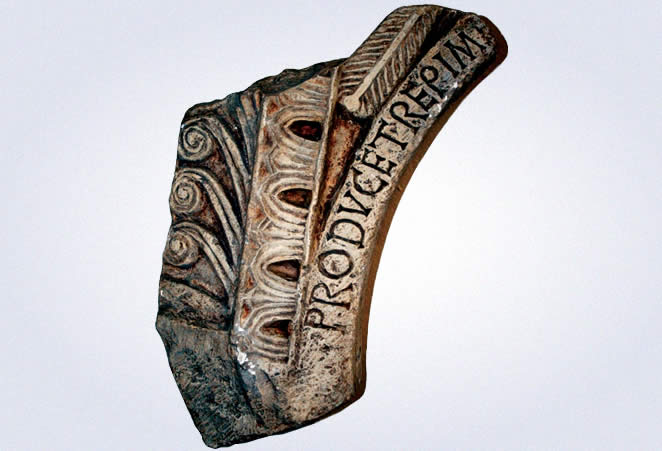 The arrival of Croats in these area was undoubtedly an important event for the future of Klis, because two centuries later, Klis became the centre of medieval Croatia. Klis County is the cradle of Croatian dynasty Trpimirovići and Trpimirovići ruled a large part of the county's territory (teritorium regale). Royal family Trpimirovići had estates in the Klis County territory Bijići and Solin, and the main royal court was in unconquerable Klis. In a transcript of the decree of 852, Klis is mentioned as the royal court (ex curte nostra que Clissa dicitur) of Croatian Lord Trpimir and his predecessor Mislav, and soon after that it became the seat of Dalmatian Croatia.
The arrival of Croats in these area was undoubtedly an important event for the future of Klis, because two centuries later, Klis became the centre of medieval Croatia. Klis County is the cradle of Croatian dynasty Trpimirovići and Trpimirovići ruled a large part of the county's territory (teritorium regale). Royal family Trpimirovići had estates in the Klis County territory Bijići and Solin, and the main royal court was in unconquerable Klis. In a transcript of the decree of 852, Klis is mentioned as the royal court (ex curte nostra que Clissa dicitur) of Croatian Lord Trpimir and his predecessor Mislav, and soon after that it became the seat of Dalmatian Croatia.
After the downfall of Croatian royal dynasty, Klis does not lose its significance. Its significance increases because of its strategic importance in troubled centuries of the Middle Ages. Thus, at the end of the 11th century, Klis came under the rule of Croatian-Hungarian Kings of Arpadović dynasty, who often appointed their dukes and nobles as Klis lords. Some of these dukes and nobles were independent and governed the town at their discretion.
In 1221, Croatian noble Domald managed to gain control over Klis, but six years later it was regained by Knez (medieval title used in Croatia, equivalent of duke, count or prince) Grgur Šubić in the king's name. A few years later, Domald was again lord of Klis, and was again overthrown by Stjepko and Jakov Šubić in 1239. Thus, Klis was once again returned to the king's authority.
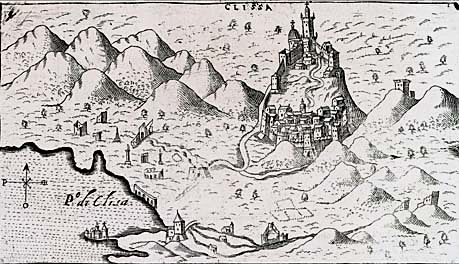 In March 1242, Tatars unsuccessfully besieged Klis Fortress in their pursuit and search for King Bela IV, who had hidden in the fortress with his family and escort earlier.
In March 1242, Tatars unsuccessfully besieged Klis Fortress in their pursuit and search for King Bela IV, who had hidden in the fortress with his family and escort earlier.
At the end of the 13th century, the most powerful Croatian noble family of Bribir Lords Šubići gained the rule of Klis, and they will hold that regency for more than fifty years. Juraj I, Juraj II, Mladen III and Pavao III have been ruling the town over those years. The town was then a free municipality with its notary, a town seal and a court known as a "kliški stol" (eng. Klis table).
Since 1355, Klis was again under the royal regency and administration of its dukes. In July 1387, the town came under the rule of Bosnian King Stjepan Tvrtko I, and from 1391 it has been briefly administered by Vuk Vukčić, Croatian and Bosnian Duke. However, Tvrtko's rule did not last long, and Nikola Gorjanski, in Sigismund's name, returned Klis back to the authority of Croatian-Hungarian kings in 1394.
In the second half of the 15th century, it became clear that dreadful events would soon begin to happen for Christian Europe, and the matter started to escalate after 1463 when Bosnia fell into Ottoman hands. At a time when Europeans discover the New World, a time of relative security and prosperity disappears irretrievably in Croatia and in Klis. In the following centuries, Croats have had to endure, suffer, fight, bleed and die for freedom of their homeland and the whole Western Europe in the ever-present battles with the Ottoman Empire.
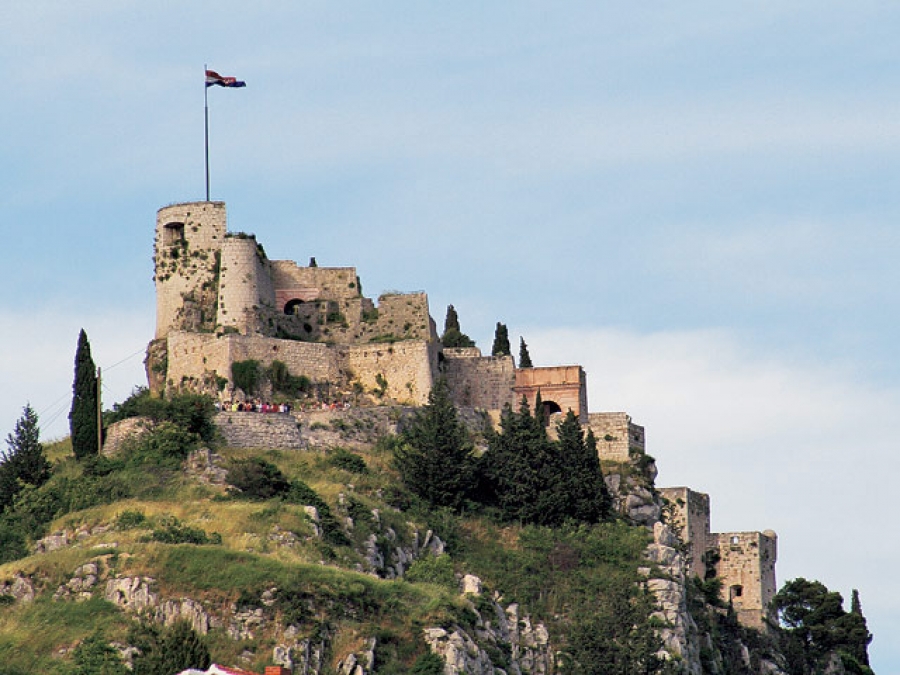 At the end of the 15th century, Ottoman army broke in through Bosnia to Croatian lands. At that time of the country's difficult state, after death of King Matthias Corvinus, Croatians have suffered a terrible defeat by the Ottoman army in 1493 in Battle of Krbava Field, where many Croatian nobles and knights died. After that victory, Ottomans saw no obstacles to their pursue towards the Adriatic sea. They assaulted Trogir, Sinj, Knin, Klis. Croatian cities in the south could not get help from northern Croatia because the army was weakened by civil war, and because Ottomans controlled all the roads and paths to the south. In order to strengthen their position between the Dalmatian coast and hinterland towards Bosnia and on roads that lead to northern Croatian, Ottomans needed a strong foothold for their military force. The best place for that, as well as for strategic advantage against Venice and Croatian-Hungarian Kingdom, was Klis. Therefore, they decided to capture it.
At the end of the 15th century, Ottoman army broke in through Bosnia to Croatian lands. At that time of the country's difficult state, after death of King Matthias Corvinus, Croatians have suffered a terrible defeat by the Ottoman army in 1493 in Battle of Krbava Field, where many Croatian nobles and knights died. After that victory, Ottomans saw no obstacles to their pursue towards the Adriatic sea. They assaulted Trogir, Sinj, Knin, Klis. Croatian cities in the south could not get help from northern Croatia because the army was weakened by civil war, and because Ottomans controlled all the roads and paths to the south. In order to strengthen their position between the Dalmatian coast and hinterland towards Bosnia and on roads that lead to northern Croatian, Ottomans needed a strong foothold for their military force. The best place for that, as well as for strategic advantage against Venice and Croatian-Hungarian Kingdom, was Klis. Therefore, they decided to capture it.
In vain did Croats ask Christian European rulers to resist Ottoman invasion together. The most turbulent period of Klis history began in the beginning of the 16th century, at the time of the greatest Ottoman invasion into Europe and Croatian lands. At that time, Petar Kružić, Captain and Knez of Klis, played a prominent role in defence of Klis, Croatia and Europe. For more than two decades, along with his Uskoks, he resisted many Ottoman attacks and sieges, while also eliminating Venetian attempts of seizing Klis.
Petar Kružić
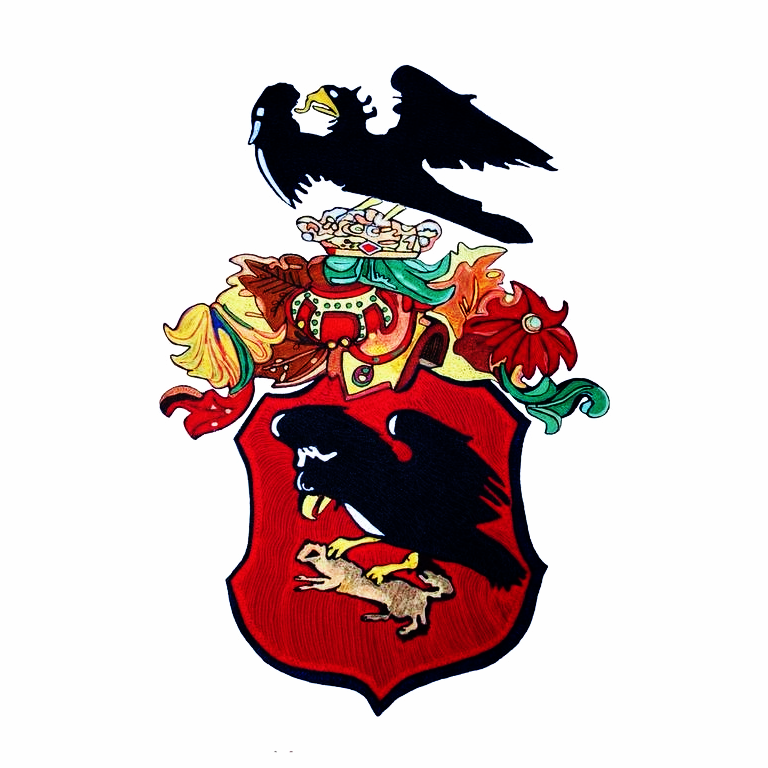 Petar Kružić and Uskoks have victoriously defended Klis from Ottoman attacks many times from 1515 until 1537 (learn more - Petar Kružić).
Petar Kružić and Uskoks have victoriously defended Klis from Ottoman attacks many times from 1515 until 1537 (learn more - Petar Kružić).
The 1537th began with a terrible winter. While Ottoman army was building forts, blocking paths to Klis, burning fields and enslaving population, Kružić was away trying to acquire food, ammunition and soldiers for Klis. There was inconsiderable amount of food and little ammunition left in Klis, and the moral of the defenders was getting lower. They also had to fight for water since Ottomans have occupied all sources of drinking water that were out of the town (Belimovača, Tri kralja, Bađana, Ilijino vrilo), and water cisterns in the fortress have not been enough for the people and horses.
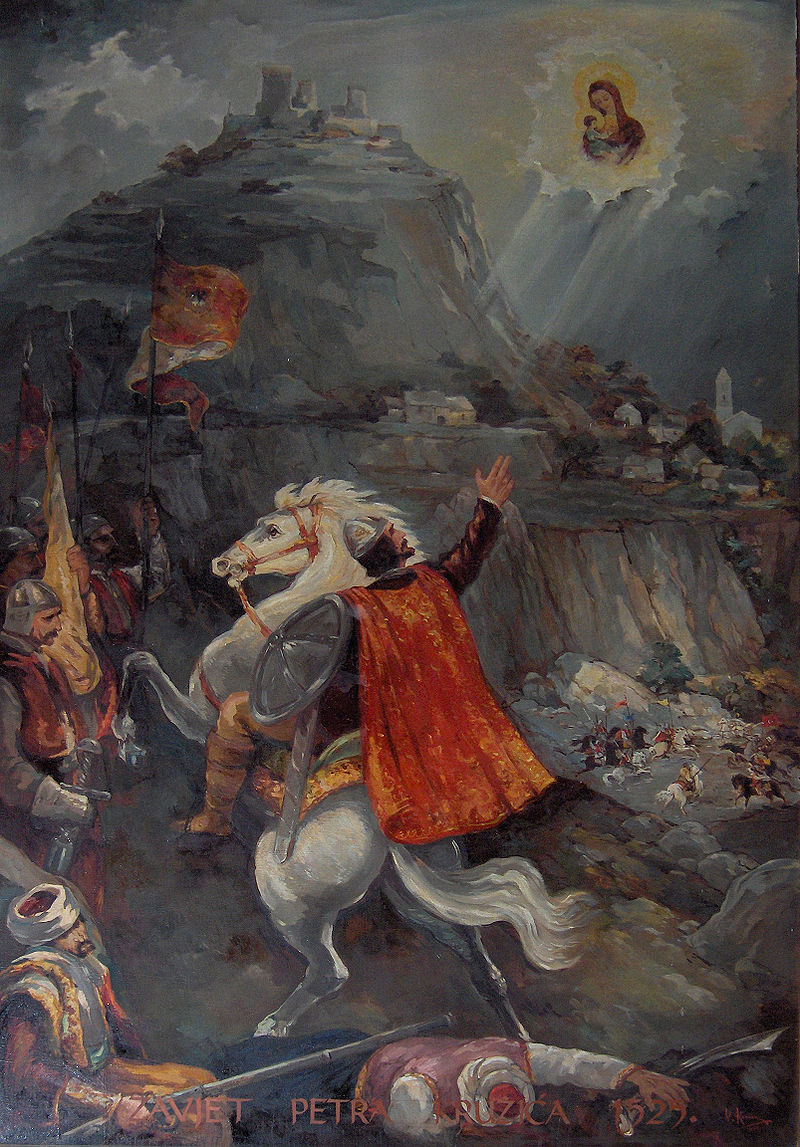 Kružić then received so needed aid from King Ferdinand for the first time ever. The king sent him soldiers-mercenaries to help in the defence. Thus, Kružić set out from Senj to defend Klis with several Uskoks, the soldiers-mercenaries of King Ferdinand and seven hundred papal soldiers, in total a little less than 3000 soldiers. In night between 11 and 12 March 1537 (at the eve of Saint Gregory), Kružić disembarked unnoticed in Vranjic harbour, leading the help to Klis, the town he had been defending for more than twenty years. In order to break the Ottoman siege, he first had to conquer the forts around Klis. In the first attack, he destroyed the forts at Ozrna and Kučine, and afterward stormed to Solin Gradina. Then, Murat-Bey Tardić and Malkoč-Bey arrived with 2000 Ottoman horsemen and some infantry and attacked Kružić's army.
Kružić then received so needed aid from King Ferdinand for the first time ever. The king sent him soldiers-mercenaries to help in the defence. Thus, Kružić set out from Senj to defend Klis with several Uskoks, the soldiers-mercenaries of King Ferdinand and seven hundred papal soldiers, in total a little less than 3000 soldiers. In night between 11 and 12 March 1537 (at the eve of Saint Gregory), Kružić disembarked unnoticed in Vranjic harbour, leading the help to Klis, the town he had been defending for more than twenty years. In order to break the Ottoman siege, he first had to conquer the forts around Klis. In the first attack, he destroyed the forts at Ozrna and Kučine, and afterward stormed to Solin Gradina. Then, Murat-Bey Tardić and Malkoč-Bey arrived with 2000 Ottoman horsemen and some infantry and attacked Kružić's army.
The foreign mercenaries, when they saw the Ottoman cavalry, immediately fled fearfully to the ships. Kružić was trying to hold battle formation and fought shoulder to shoulder with few of his Uskoks. With his two hundred warriors, he fought against ten times greater enemy force, who was constantly pushing them toward the ships. In the last moment, everyone boarded the ships. However, the ship was overcrowded with people and equipment so it stranded at sand seafloor and could not set sail. The Ottomans took advantage and attacked again. In the occurred melee, Atli-aga killed Petra Kružić and beheaded him. Murat-Bey Tardić stuck Kružić's head on spear and triumphantly presented it to the defenders in Klis Fortress.
 After seeing their captain dead, Klis Uskoks were discouraged and decided to negotiate with the Ottomans. They agreed to give over the fortress and town Klis to the Ottomans, and the Ottomans agreed to let them, their women and children, depart undisturbed to other Croatian lands. Most of them went to Senj, the other uskok town, and continued fighting Ottomans in decades that followed (learn more - About Uskoks).
After seeing their captain dead, Klis Uskoks were discouraged and decided to negotiate with the Ottomans. They agreed to give over the fortress and town Klis to the Ottomans, and the Ottomans agreed to let them, their women and children, depart undisturbed to other Croatian lands. Most of them went to Senj, the other uskok town, and continued fighting Ottomans in decades that followed (learn more - About Uskoks).
Kružić was buried in the Church of Blessed Virgin Mary in Trsat, where his head was also placed after his sister Mary had redeemed it from the Ottomans. On the tombstone under altar of St. Peter, in the church of Our Lady of Trsat stands a Latin inscription that in translation means:
This marble stone covers the bones of Petar Kružić, whom, oh, Turks killed. While he was alive, Senj and Klis have never feared Turks. Death has taken his body, heaven has taken his soul, and his heroic deeds are spread around the world by eternal glory.
Christian Europe lost one of its greatest defenders by Kružić's death. By virtue of Kružić and his warriors, Western Europe could enjoy its security and developed economically, culturally and scientifically and enjoy new overseas property. Croatians were left only with cynical words of consolation like those King Ferdinand I. Habsburg wrote to Kružić before Kružić's death: "Know that we have long been trying to acquire help for you and that we have done all for your salvation and we firmly hope that this siege will be completely scattered and broken." After King Ferdinand had indeed sent soldiers-mercenaries to Kružić, he caused Kružić's death because Kružić, not knowing that he received cowardly soldiers, died trusting that mercenary army was worthy of fighting side by side with Croatian Uskoks.
Klis 1537 - 1648
For next 111 years Klis was under the Ottoman rule. After capturing Klis, Ottomans immediately made it the seat of sanjak. Klis sanjak covered the territory from the river Bunica and Bilaja, across Drniš and Vrlika, to the river Rama in the north and the river Neretva in the south. Both Uskoks and Venetians tried to seize Klis on several occasions over that period.
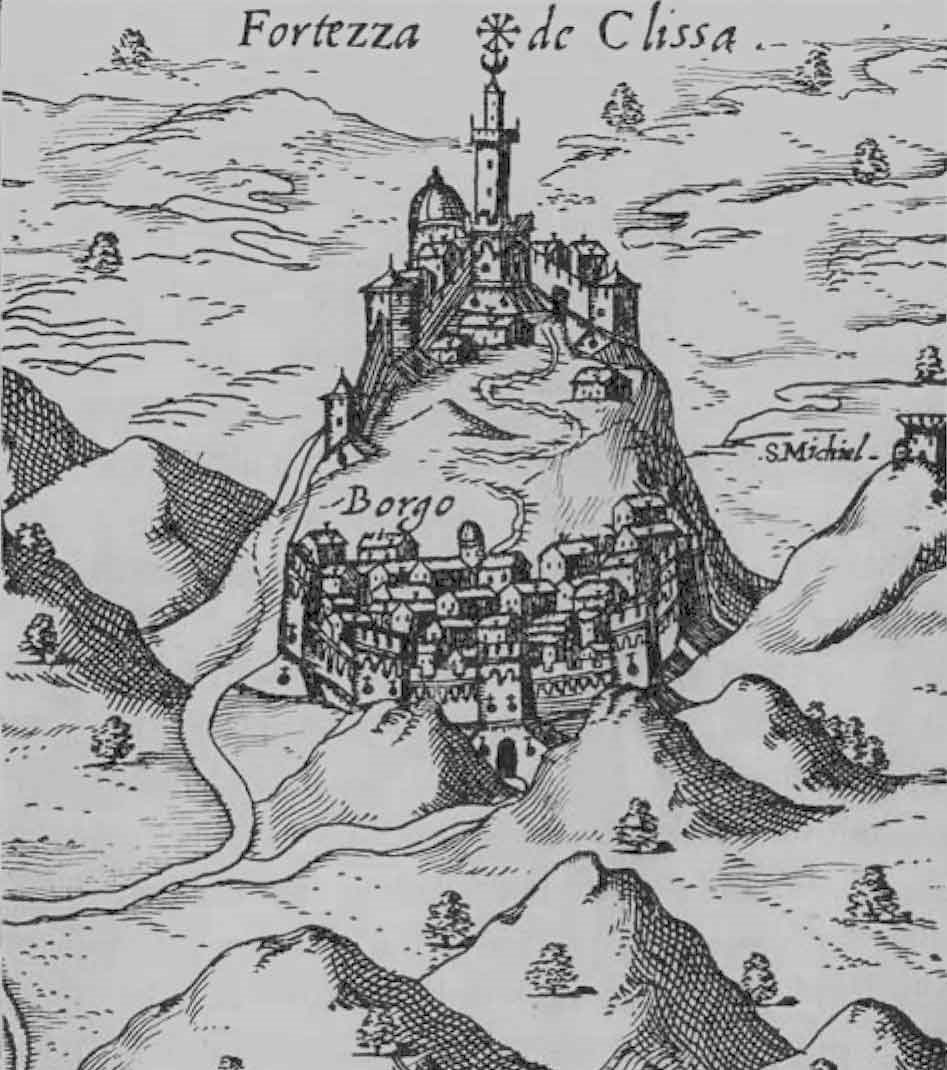 At the beginning of April 1596, hundred Croats (Uskoks and other domestic people) led by Split nobles, Ivan Alberti and Nikola Cindro, were able to seize Klis Fortress. It was agreed that papal help to Klis would arrive as soon as the fortress is taken, but Venetians (under whose authority Split and the surrounding coast were) blocked and forbade entrance of the papal ships to the harbour. Thus, they prevented arrival of food, ammunition and papal army to Klis. Ottomans soon organized counterattack and shortly there were about eight thousand Ottomans besieging Klis, while there were a thousand and five hundred Klis defenders. In late May, commander of Croatian Krajina, General Juraj Lenković, arrived with around one thousand soldiers to help the defenders, but he was defeated and wounded in the battle at foothill of the fortress against larger Ottoman army. On that occasion, Ivan Alberti, Nikola Cindro and over a thousand soldiers died. When, after nearly two months of the siege, Klis liberators remained without commander, water, food, and other resources, they were forced to hand over Klis to Ottomans on May 31. This loss of Klis was largely guilt of Venetians who prevented papal army and Croats from arriving and helping the Klis liberators.
At the beginning of April 1596, hundred Croats (Uskoks and other domestic people) led by Split nobles, Ivan Alberti and Nikola Cindro, were able to seize Klis Fortress. It was agreed that papal help to Klis would arrive as soon as the fortress is taken, but Venetians (under whose authority Split and the surrounding coast were) blocked and forbade entrance of the papal ships to the harbour. Thus, they prevented arrival of food, ammunition and papal army to Klis. Ottomans soon organized counterattack and shortly there were about eight thousand Ottomans besieging Klis, while there were a thousand and five hundred Klis defenders. In late May, commander of Croatian Krajina, General Juraj Lenković, arrived with around one thousand soldiers to help the defenders, but he was defeated and wounded in the battle at foothill of the fortress against larger Ottoman army. On that occasion, Ivan Alberti, Nikola Cindro and over a thousand soldiers died. When, after nearly two months of the siege, Klis liberators remained without commander, water, food, and other resources, they were forced to hand over Klis to Ottomans on May 31. This loss of Klis was largely guilt of Venetians who prevented papal army and Croats from arriving and helping the Klis liberators.
Apart from a few unsuccessful uskok plans for recapturing Klis, nothing notable has happened about Klis in the next fifty years.
Klis 1648 - today
 During the Cretan War (1645 – 1669) in March 1648, around 10 000 Venetian soldiers led by General Leonardo Foscolo, along with numerous Croats led by monk Stjepan Sorić, Vuk Mandušić and brothers Janko and Šimun Marjanović, besieged Klis, which was defended by a thousand Ottomans.
During the Cretan War (1645 – 1669) in March 1648, around 10 000 Venetian soldiers led by General Leonardo Foscolo, along with numerous Croats led by monk Stjepan Sorić, Vuk Mandušić and brothers Janko and Šimun Marjanović, besieged Klis, which was defended by a thousand Ottomans.
After ten days of bloody battles, during which certain defence positions of Klis were repeatedly won and lost, Ottomans surrendered on 31 March and handed over Klis. Terms of surrender were agreed by which the Venetian army would let Ottomans freely depart from Klis. When Ottomans were coming out of the fortress, wounded Ahmed-aga (Mustafa) Baraković, known to local population by his cruelty, was threatening with revenge for the suffered defeat. That provoked Poljica warriors who then killed him and his escort, thereby breaking terms of surrender. That was used by Vlachs, Venetian soldiers, German and Albanian mercenaries to rob and kill over two hundred Ottomans who had already surrendered.
Prominent and acclaimed warriors Stjepan Sorić, Stojan and Ilija Janković, Petar and Ilija Smiljanić and Vuk Mandušić took part in the Cretan War and in the battles under Klis. Stjepan Sorić was leader of Uskoks, he distinguished in many battles against Ottomans for liberation of Lika. He and his Uskoks participated in the liberation of Klis in 1648. He died in the battle against Ottomans, fighting to the end with a sabre in his hand. He fell "as a man who fights for the faith and freedom". Stjepan Sorić was celebrated in many folk songs. Stojan Janković was the lord of Ravni Kotari in Venetian service and was one of Croat leaders during the liberation of Klis in 1648. He died in 1687. During the Cretan War, Ilija Smiljanić was an uskok commanding officer in the Klis battles, and he died in 1654.
Conquering of Klis was the Venetians greatest achievement in the Cretan War. They celebrated it by tolling bells of all churches in Venice, shooting of cannons and solemn "Te Deum" in St. Mark cathedral in Venice. Under the Venetian rule, the whole area was organized as a special military administrative district with headquarters in Klis, which was administered by proveditor.
Venice governed Klis until 1797. Then, for a short period, until 1813, Klis was taken over by France (Napoleon Bonaparte), and after that it began the period of Austrian authority until 1918. With collapse of the Habsburg Monarchy, Klis lost military strategic significance. In the next period, Klis, along with whole Dalmatia, shared the fate of all Croatian lands. Finally, in 1990, the flag of Republic of Croatia was raised at Klis Fortress.
